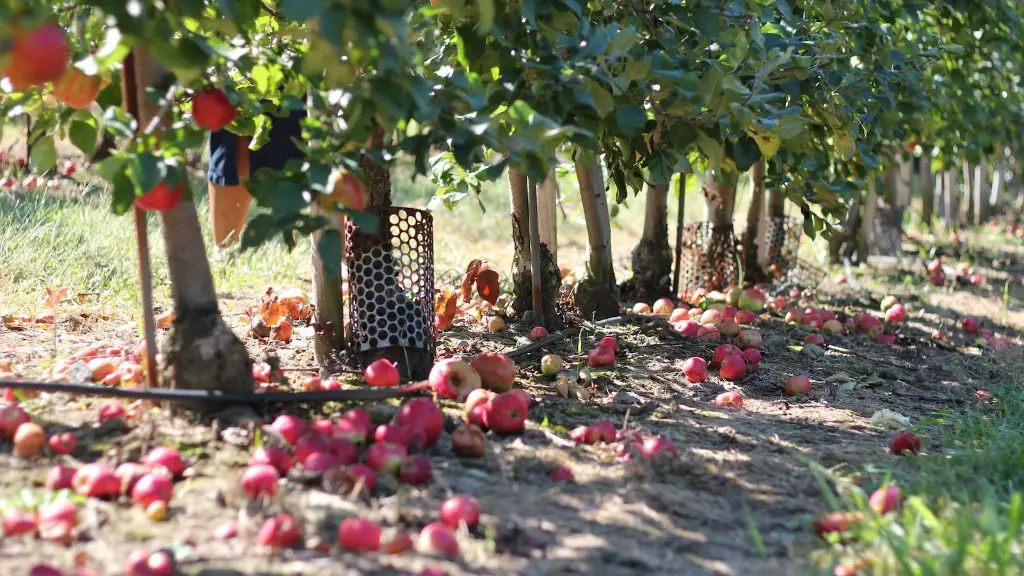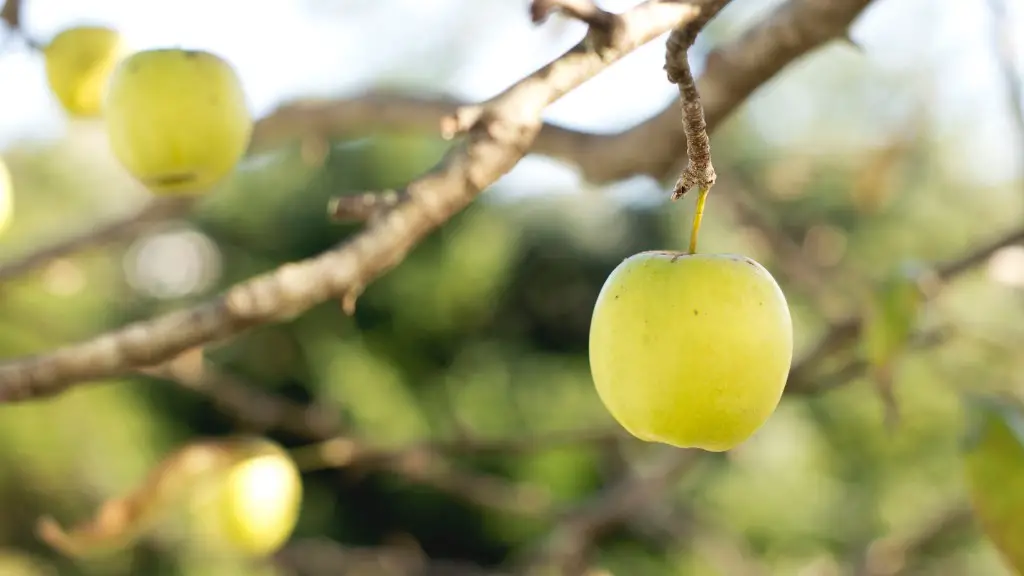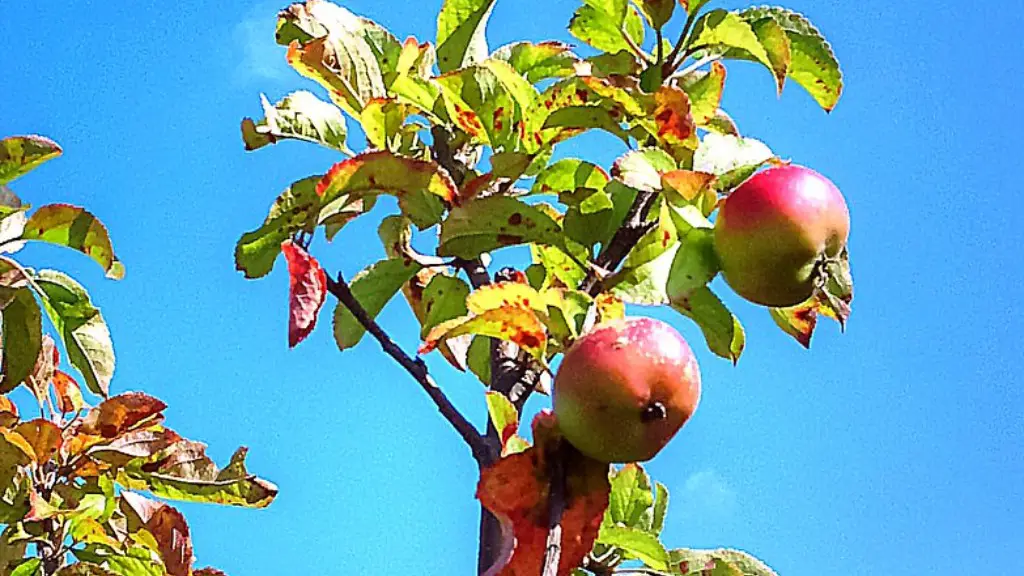Planting a bare root apple tree can be a little intimidating, but with the right know-how and patience, it’s a rewarding experience. Here are the steps for planting the tree correctly. First, you’ll need the right materials: a shovel, a saw, a trowel, and soil. Next, you’ll need to pick a sunny spot for your apple tree, as it needs regular sunlight to thrive. Once the spot is chosen, it’s time to dig the hole; make sure it’s twice as wide as the root system, and slightly deeper than the roots. After that, carefully remove the tree from its wrapping, being careful not to damage the roots. You’ll then dip the roots in water for about an hour before planting. This helps the tree become acclimated to its new home. Once it’s ready, spread the roots around the hole, then fill in the dirt with soil, patting it down as you go. Finally, be sure to water your apple tree well, making sure the root system gets plenty of H2O. After the initial planting, your new tree will need regular watering, fertilizing, and pruning to ensure it has a healthy, productive life.
Watering & Fertilizing
Established apple trees need plenty of water and fertilizer to maintain their health and productivity. A deep, thorough watering once every two weeks should be sufficient, especially during the warm months. During the winter, your tree may still need some extra moisture, depending on the weather. As for fertilizing, most experts recommend doing it once a year in the early spring, just after the tree begins to blossom.
For the best results, use a granular fertilizer that’s designed specifically for fruit trees. Apply the fertilizer around the perimeter of the tree, following the manufacturer’s instructions for amount and frequency. Water your tree immediately after to ensure the fertilizer gets down deep into the root system and the nearby soil.
Pruning
Pruning is an important part of caring for an apple tree. It helps promote health, shape, and productivity. For most apple trees, it should be done at least once every season, in late winter or early spring. Make sure to cut off any dead or diseased branches, as well as any low-hanging branches that may be susceptible to disease.
Before pruning, familiarize yourself with the basics of pruning technique, or have a professional do the job for you. Apple trees usually require a specific kind of pruning to ensure the right balance between fruit, foliage, and sunlight. If you’re not sure how to prune your tree properly, seek out a professional arborist.
Protection & Winterizing
Apple trees are susceptible to a variety of diseases, pests, and other elements that can cause issues with growth, health, and quality. So, it’s important to take some extra steps to ensure your tree remains safe and healthy. Adding some mulch around the base of the tree is a good way to provide a barrier against weeds, insects, and other forms of damage.
Additionally, when the winter months come, it’s important to protect your tree from the cold. Wrapping it with burlap or another form of fabric can help keep the harsh winds from damaging the trunk and branches. Make sure to remove the wraps when the weather begins to warm back up again.
Diseases & Pests
Apple trees are susceptible to a variety of diseases, especially when they’re young and just starting out. The most common is apple scab, which is caused by a fungus and appears as raised, black spots on the fruit. To stop the spread of the fungus, it’s important to regularly inspect the trees and remove any of the infected fruit.
In addition to diseases, apple trees can also be plagued by pests such as aphids, scale, and leafhoppers. To keep these pests under control, start by maintaining a healthy, clean environment around the tree. If the infestation is particularly bad, introduce natural predators, such as ladybugs and green lacewings, or invest in a pesticide specifically designed to protect your tree.
Repotting & Transplanting
After a couple of years, it can be beneficial to repot or transplant your apple tree. This helps revitalize the root system, which is key to providing the apple tree with the nutrients and energy it needs. When repotting, it’s a good idea to transplant the tree into a larger container to give it more room to grow. Make sure to use quality soil and, if necessary, add some fertilizer or compost to give the tree some extra nutrients.
Transplanting your apple tree into a larger plot of land can also be beneficial. All you need to do is dig a hole twice as wide as the root system, carefully moving the tree over to its new home. After that, fill in the dirt around the root system and give the tree some water. Once the new tree is settled in, make sure to regularly water, fertilize, and prune it to ensure it continues to grow and produce its delicious fruit.
Grafting & Budding
Grafting and budding can be a great way to increase the variety of apples that a tree can produce. By grafting, you can use a single tree to produce multiple types of apples. In essence, it’s just a matter of attaching a twig from a different apple tree to the existing tree; this allows the new tree to access the same root system, providing you with multiple kinds of apples.
When grafting, make sure the twig is from a similar type of apple tree. Additionally, both the newly grafted twig and the existing tree should be pruned regularly to ensure there’s plenty of sunlight and air flow. For budding, it’s best to consult an expert; this type of grafting requires a little more skill and care than a standard grafting.
Tools & Supplies Needed
For a new apple tree, you’ll need a few tools and supplies to ensure the planting process goes smoothly. At least a shovel and trowel will come in handy for digging the hole. Additionally, you may need a saw to trim away any dead or damaged branches and a set of pruners to complete the job. Plus, you’ll need some fertilizer and mulch to ensure the tree has the right kind of soil and nutrition.
Finally, don’t forget to purchase an apple tree. You can find bare root trees at most local nurseries or garden stores, or you can order one online. If you do order one online, make sure to read the reviews and make note of the growers’ return policy, just in case you need to send it back.



